MPC Studio under Technicolor has bagged the Oscar for visual effects on 1917 at the 92nd Academy Awards. Production VFX supervisor Guillaume Rocheron has accepted the award on behalf of MPC Film’s talented team of VFX artists, production crew and software engineers based in Montreal, London, Los Angeles and Bangalore.
Working closely with director Sam Mendes and cinematographer Roger Deakins, MPC Film lead the visual effects work, with approximately 600 artists contributing to the film.
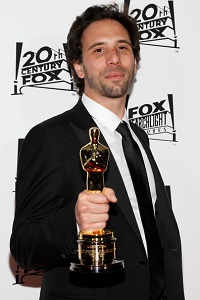
While receiving the award at the night Rocheron said “What an honour to be recognised by the Academy for our work on 1917! I am grateful for the opportunity to collaborate with Sam Mendes on such a unique and memorable film and I am proud to share this award with the team at MPC that made this cinematic experience possible.”
Earlier MPC’s VFX work for 1917 was also recognized at the British Academy Film Awards (BAFTA) on 2 February where they won the award for Special Visual Effects on 1917.
This is the third Academy Award won by the MPC studio, earlier it had received awards for The Jungle Book and the Life of Pi for the Best in VFX. This year, 1917 has also won Academy Awards for the Best Cinematography and Best Sound Mixing as well. The other nominations for the best VFX category were Avengers: Endgame, The Irishman, The Lion King, Star Wars: The Rise of Skywalker.
The story revolves around the height of the World War I, where two young British soldiers, Schofield (Captain Fantastic’s George MacKay) and Blake (Game of Thrones’ Dean-Charles Chapman) are given a seemingly impossible mission. In a race against time, they must cross enemy territory and deliver a message that will stop a deadly attack on hundreds of soldiers—Blake’s own brother among them.
What went behind the production of 1917 ?
Mendes had the idea to tell the story in real-time when he was writing the screenplay, which was inspired by his grandfather’s accounts of serving in World War I. It is difficult to figure out how many different shots are edited together, but many are in the vicinity of six-to-eight minutes. That’s a significant time to go without cut-away shots, which give directors and editors room to move.
The team’s work included digital environment extensions, including; No Man’s Land, the canal crossing, the burning village of Écoust and Schofield’s jump into the river, as well as destruction, pyro and water effects.
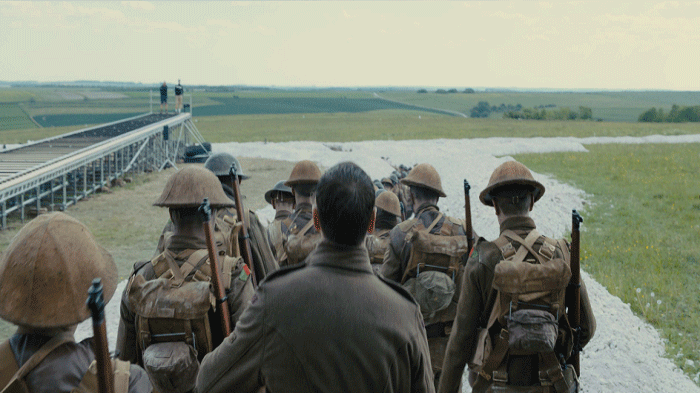
According to the official case study, “In the immersive cinematic experience, Mendes thrusts the audience into the immediate peril and vast scale of World War I, witnessed the conflict in an urgent and propulsive way. The film is told in real-time and plays as one continuous shot. To execute Mendes’ groundbreaking, innovative vision required intensive planning and collaboration across multiple departments, in particular camera, production design, sound, special effects and visual effects.”
The director revealed to VOX before the release that many of the scenes were shot under natural light, as artificial lights could have been visible giving the amount that the camera rotates during the course of a long shot. It was a challenge for cinematographer Roger Deakins, a veteran of the trade who has been nominated for an Oscar many times, winning his first in 2018 for Bladerunner: 2049. Not only that to create the authenticity on screen the director spent a lot of time to analyse and watch the sky and in his weather apps to figure out when they could shoot or not.
How single-take scenes were designed?
Where long sequences are shot in single-take scenes it requires an immense amount of practice and mapping. The actors were involved in months of pre-production before shooting began, which is uncommon. Their movements had to be choreographed so that the camera crew — who used a combination of cranes, drones, motorbikes, trucks and shoulder mounts — could follow them. That extensive mapping out of the action was also essential for the later construction of the set, which Mendes knew had to be tailored to the action. Not only that, scenes which involved VFX are also designed prior for proper incorporation in the postproduction.
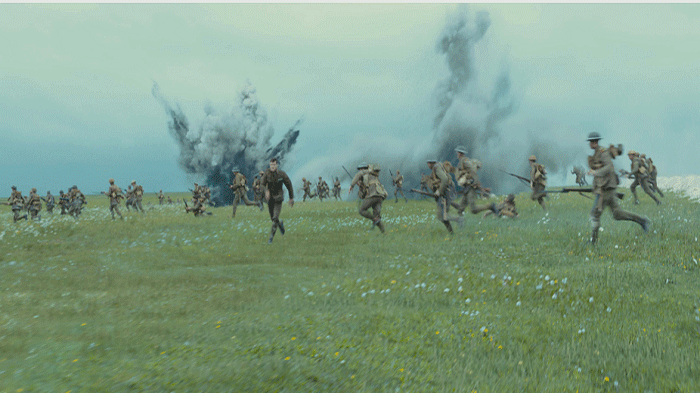
MPC employed multiple digital techniques to make the stitches in the film invisible; from simple wipes to complex digital double takeovers. The plane crash utilised multiple techniques, including plate stitching, CG planes, and CG destruction. The burning city of Écoust was shot on a partial set on a backlot. CG destroyed-architecture and fire effects were then added to extend the scale and the scope of the burning city.
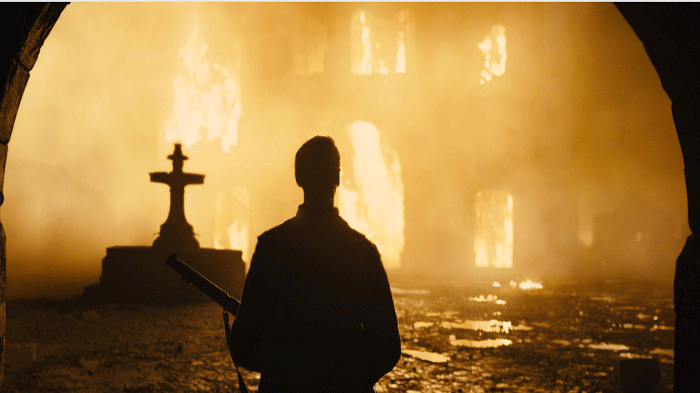
The River sequence was shot in an Olympic water park in order to get practical direct water interaction with Schofield as he is swept down the rapids. In the finished film, the rapids were extended and augmented by MPC to set the scene in a hostile natural environment. Shot stitches were particularly complicated as the blends had to work with water surface and splashes as well as complex effects simulations.
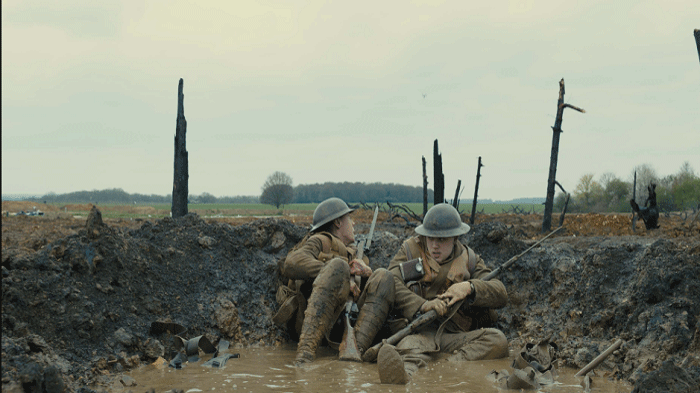
Because the production employed long, uninterrupted takes, creating visual effects that hold up to scrutiny, without cuts, across unbroken scenes and in 4K IMAX, presented MPC Film with unique creative and logistical challenges. As of 9 February 2020, 1917 has grossed $132.5 million in the United States and Canada and $154.8 million in other countries, for a worldwide total of $287.3 million, against a production budget of $90–100 million.

